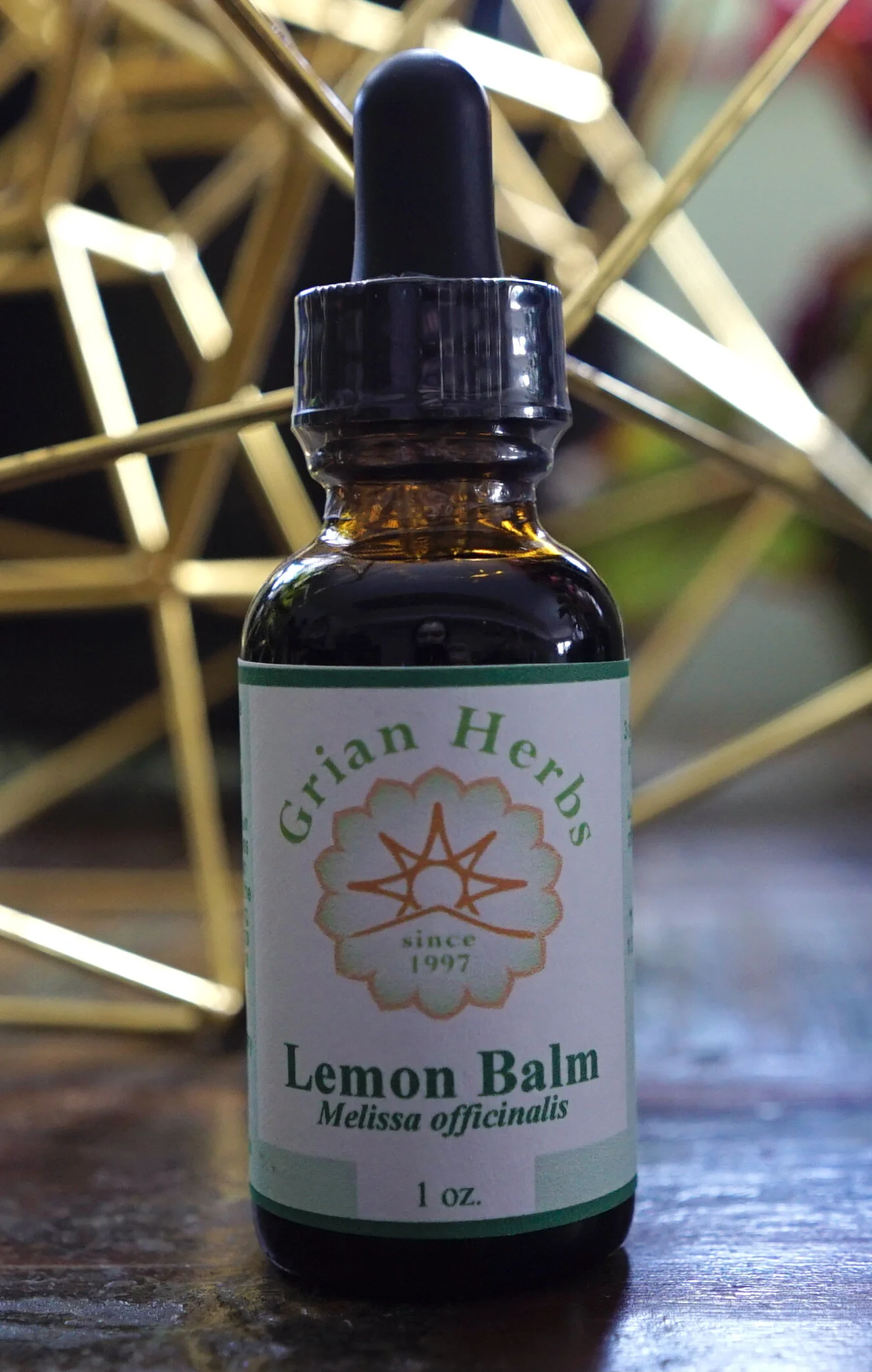Lemon Balm (Melissa Officinalis)
Lemon Balm (Melissa Officinalis)
Lemon Balm is a member of the Mint family, the Labiateae. We harvest the leaves before flowering, usually in June, and garble them to remove the stems. This is a hardy and resilient plant, a great source of ‘garden aromatherapy’ as we brush up against it along the path. It requires little care and self-seeds prolifically; given space and fertility, it can get quite huge. Every so often, a little side-dressing of mature compost is helpful (no more than once a season).
Elemental associations: Water
Phytochemistry: Essential oil, bitter principles, flavones, resin (D. Hoffmann)
Actions: Nervine, carminative, anti-spasmodic, relaxant, anti-viral
Specific systems: Nervous, Digestive
Lemon Balm is known by many as the ‘gladdening herb’. It makes a gentle, soothing tea that calms and relaxes the mind while also mellowing the digestive system (funny how closely connected these two can be – in fact, the solar plexus, located at the level of the stomach just below the sternum, is a direct link between these two systems). Its volatile oils relieve ‘intestinal wind’, especially when taken after meals. I tend to think of Lemon Balm more in a long-term way, though: for many of today’s frazzled, stressed personalities, this herb can work wonders. It isn’t a sedative, but it certainly is calming.
In addition, it has a marked anti-viral action against the Herpes virus, which is responsible for cold sores. Therefore, it makes a good addition to a cold and flu tea, both for flavor and to prevent the sores from recurring.
The combination of calming, digestive soothing, anti-viral properties, and good taste make this herb a great one for kids. Consider adding it to teas you blend for the young ones; its calming effect can be of benefit in so-called “attention deficit” conditions.
Recent evidence suggests that Lemon Balm may resonate with the basal metabolic regulators, affecting thyroid hormone levels by perhaps reducing their use or production. For this reason, you should consider whether people with low thyroid levels should use this herb.
Indications: Digestive upset, gassiness, nervous tension, anxiety, stress, Herpes, hyperthytoidism, ADD/ADHD
Contraindications: Theoretically hypothiroidism.
Preparation/Dosage: The infusion is traditional. For a beverage tea, use 2-3 TBS of the freshly dried herb per quart of water. For medicinal use, increase the herb used to 6 TBS.
A tincture can also be made from the fresh plant, with 50% alcohol, 1:5. Take ½ to 1 tsp. 2-3 times a day, preferably after meals in a little water.
Size: 1 fl oz

